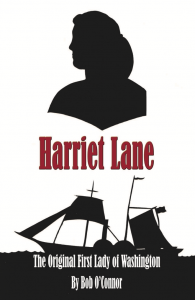 Harriet Lane — The Original First Lady of Washington
Harriet Lane — The Original First Lady of Washington
Historical novel about Harriet Lane, who served as First Lady of Washington when her unmarried uncle, James Buchanan, was President of the United States.
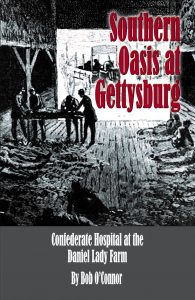 Southern Oasis at Gettysburg
Southern Oasis at Gettysburg
Historical fiction account of the northernmost Confederate hospital in the American Civil War located across the road from Culp’s Hill at the Daniel Lady Farm.
 The Murphy Farm: A Refuge from Racism
The Murphy Farm: A Refuge from Racism
This non-fiction book tells the story of a farm on the grounds of Harpers Ferry National Historical Park that contains both Civil
War and Civil Rights heritage.

The Amazing Legacy of James E. Hanger, Civil War Soldier
James E. Hanger was wounded at Philippi, Virginia on June 3, 1861 and became the first amputee of the American Civil War. He hated the Yankee peg leg his Union doctor gave him. Instead, he used his ingenuity and engineering background to invent an artificial leg with a joint at the knee and a hinge at the ankle. He patented his Hanger Limb.
His invention revolutionized the prosthetic industry. The company Mr. Hanger founded still operates today as one of the world’s largest providers of artificial limbs. His story is quite remarkable.

Countdown to West Virginia Statehood
Most people believe that the reason western Virginia split off from eastern Virginia in 1863 was due to the pro-Union people disagreeing with Virginia’s secession in 1861. But the fissure between the two sections actually went back to the first state constitution in 1776.
That document called for land ownership as a requirement for voting rights. Many western Virginians were not eligible to vote all the way up to the year 1850. The imbalance caused for much greater representation from the eastern section of the commonwealth of Virginia, and an overwhelming sense from “the mountaineers” that they were being discriminated against.
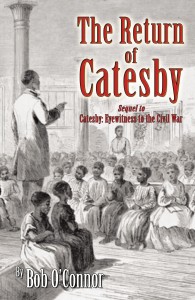 The Return of Catesby
The Return of Catesby
The Return of Catesby is a sequel to “Catesby: Eyewitness to the Civil War” published in 2008. In this account, Catesby, a former slave, becomes the first colored teacher at Storer College in Harpers Ferry, WV. Storer was one of the first schools in the country to be established for the purpose of educating former slaves.
Catesby, a real historical character, brings his experience as a blacksmith, a veteran of the Union Army, and his survival of the famed Andersonville Prison to his students. The historical fiction story is based on Catesby’s journals, papers and letters.
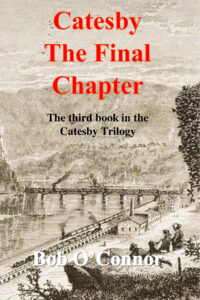 Catesby: The Final Chapter
Catesby: The Final Chapter
Catesby returns two years after his fall from the bridge at Harpers Ferry. He works to attempt to remember who he was before hitting his head and falling to his “death”. Along the way, we learn how his small daily victories help lead him back to the Catesby we had loved in his previous books.
 A House Divided Against Itself
A House Divided Against Itself
It is often said about the American Civil War that “brothers fought against brothers”. While they did fight on opposite sides, only in rare instances did brothers actually face each other in battle.
“A House Divided Against Itself” follows two brothers, Wesley and William Culp, who faced each other twice, at the battle of Falling Waters, and at the battle of Second Winchester. And they met again in Gettysburg on the first day of that battle.
This interesting tale is based on the regimental records of the two regiments and 90 actual letters of actual instances in the war.
 The Life of Abraham Lincoln as President
The Life of Abraham Lincoln as President
Imagine yourself in the early 21st century, finding an unpublished book written by a friend of Abraham Lincoln. That is exactly what happened to nationally recognized author, Bob O’Connor, a member of the Berkeley County Historical Society.O’Connor, who lives in Charles Town, West Virginia, found this rare book in the Lamon papers at The Huntington Library in California in 2008. As editor, O’Connor, transcribed the document and has added footnotes to identify the characters and define the 19th century legal terms used by Mr. Lamon, who was an attorney.
Ward Hill Lamon was born in Summit Point, VA (today WV) and grew up in Mill Creek, VA (now Bunker Hill, WV). He moved to Illinois in 1846 and became an attorney on the 8th Judicial Circuit of Illinois. No one had as much access to Abraham Lincoln during his presidency than Ward Hill Lamon. Lamon spent many a night sleeping outside the Lincoln bedroom on the floor to protect his friend from harm. But when the war ended, Abraham Lincoln sent Lamon on assignment and went to the Ford’s Theater against his bodyguard’s advice. The rest is history.
Lamon had known Mr. Lincoln since 1848. They were both attorneys on the 8th circuit of Illinois and were law partners from 1852-1856. Lamon was one of only three men Lincoln took to Washington with him when he became President. The other two were his secretaries, John Hay and John Nicolay. Following Lincoln’s death, two books were published listing Ward Hill Lamon as the author. The first, published in 1872, was called “The Life of Abraham Lincoln: From his birth to his Inauguration as President.” An original copy of that book resides in the collection of the Berkeley County Historical Society. The second, originally published in 1895, was called “Recollections of Abraham Lincoln.”
It is of interest to note that neither of those two publications was actually written by Mr. Lamon. The first book was written by a ghost writer, Chauncey Black, who was paid by Lamon to write a book based on Lamon’s papers and papers Lamon purchased from William Herndon, another of Lincoln’s law partners. The second book was put together after Lamon’s death by his daughter Dollie from her father’s papers.
This book, in fact, is the only book ever written by Lincoln’s bodyguard. Historians have tagged Lamon as a “braggart” yet those who read this book will find that in every single instance that Lamon talks about himself (as being the “friend who snuck Mr. Lincoln through Baltimore on his way to the Inauguration because plots had been discovered against Lincoln’s life) – Lamon never once identifies that he is talking about himself. Lamon takes time in his book to talk about the time prior to the Civil War when he says that in the hands of Congress “lay the means of life and the means of death. They gave us one and withheld the other. They declined to take the responsibility of allaying the tumult; but took the far greater responsibility of allowing the nation to drift unconsciously and unprepared into the most gigantic civil war that ever shook the earth…With Congress rested the whole responsibility of peace or war and with them the message was left…but Congress behaved like a body of men who thought that the calamities of the nation were no special business of theirs….It is certain that they did not think the Union in danger or else did not care to preserve it…The nation was going to pieces and Congress left to its fate. The vessel freighted with all the hopes and all the wealth of 30,000,000 people was drifting to her doom and they alone who had the power to control her course refused to lay a finger on her helm.” Ward Hill Lamon was with President Lincoln on a routine basis every single day.
He often entertained the President by singing to him and playing his banjo. Those silly songs got Lamon in trouble along the way. Mr. Lamon also traveled with President Lincoln to Sharpsburg in October 1862 and to Gettysburg in 1863. Lemon was asked by Judge Wills to orchestrate the entire event. It was Lamon who was Marshal in Chief of Dedication of the National at Gettysburg on November 19, 1863. Lamon set up the order of procession, invited guest from each of the Northern states, borrowed the buggies and horses for the celebrities, was in charge of security, and introduced Mr. Lincoln as he gave what we now know as “The Gettysburg Address.” In fact, Lamon is the only identified person besides President Lincoln in the one known photograph taken that day. In this book, Mr. Lamon tells of Mr. Lincoln’s daily struggles in talking to widows and women whose husbands were in civil war prisons. He describes Lincoln’s views regarding his family, and especially his young son Tad.
You might ask if there is anything new in this book? The answer is yes. During the habeas corpus controversy between Roger B. Taney, Chief Justice of the Supreme Court and President Lincoln, there was a question concerning Lincoln’s response. James F. Simon author of “Lincoln and Chief Justice Taney” told O’Connor “I was aware of reports that Lincoln authorized Taney’s arrest…but found no documentation to back it up.” In the book Lamon provides that missing documentation, saying that “After due consideration, the administration determined upon the arrest of the chief justice. A warrant or order was issued for his arrest. Then arose the question of service. Who would make the arrest and where should be his imprisonment? It was finally determined to place the order of arrest in the hands of the United States Marshal of the District of Columbia. This was done by the president with instruction by him to use the marshal’s own discretion about making the arrest unless he should receive further orders from Mr. Lincoln.” (It was Lamon who was the U.S. Marshal of the District of Columbia.)
Lamon’s friend J. P. Usher and others urged Ward Hill Lamon to write this book. Usher told Mr. Lamon that “there are now but a few left who were intimately acquainted with Mr. Lincoln. I do not call to mind anyone who was so much with him as yourself.” It is not certain why the book was never published until now.
O’Connor has also written a historical fiction account of the life of Ward Hill Lamon, the only account ever written. It is called “The Virginian Who Might Have Saved Lincoln” and was published in 2007 by Infinity Publishing. It has been named finalist in both the Best Book Awards and The Indie Excellence Awards.
Lamon died in 1893 and is buried in the Gerrardstown (WV) Presbyterian Church cemetery near where he grew up.
For more information click here.
 Ranson, A Centennial History
Ranson, A Centennial History
This 233 page, hard bound book follows the history of a West Virginia town that was the first planned community in the region. The town’s streets and plats were laid out in 1891 by the Charles Town Mining, Manufacturing and Improvement Company. The company’s office building still operates today as the Town Hall, seat of the town’s government. Along the way, the town has attracted more than its fair share of heavy industry. Some of those buildings are in adaptive reuse 120 years later. This non-fiction story is of the town, its people, and its unique tales. Although probably like a lot of other small towns in America, Ranson’s place in history is unique.
 The U.S. Colored Troops at Andersonville Prison
The U.S. Colored Troops at Andersonville Prison
The U.S. Colored Troops at Andersonville Prison”, unlike my other three books, is non-fiction. It is the account of the 103 black soldiers at the prison and a biography of each. It is a follow-up from my last book, “Catesby: Eyewitness to the Civil War” as Catesby was in that prison and kept records of the black soldiers in there with him.This book includes a photograph of the grave marker for each USCT soldier who died in the prison except one, as he has an unmarked grave. Of the 179,000 black Union soldiers, only 776 ever made it into a Confederate prison. We are even unsure of the accuracy of that number, because several may have been counted more than once as they were moved from one prison to another.
 Catesby: Eyewitness to the Civil War
Catesby: Eyewitness to the Civil War
Learn about the experiences of a real slave who was captured by John Brown during the famous raid at Harpers Ferry in 1859. The book follows Catesby’s life after the raid and his determined quest to become a free black man.During his journey, Catesby encounters abuse, terrible conflicts, trusted friendships and love, as the war seems to follow him from place to place. A skilled blacksmith and an educated man, Catesby becomes the “inside source” to describe events you could not even imagine. You will find his story unforgettable, but also very believable.
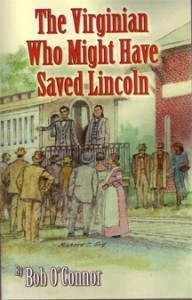 The Virginian Who Might Have Saved Lincoln
The Virginian Who Might Have Saved Lincoln
President Lincoln’s trusted friend, former law partner and heavily armed bodyguard, Ward Hill Lamon, is the subject of this new historical novel. Lamon snuck Lincoln into Washington prior to the Inauguration when detective Allan Pinkerton uncovered a plot to assassinate Lincoln when his train passed through Baltimore.
Lamon was in charge of the dedication of the national cemetery at Gettysburg on November 19, 1863. Many nights he slept on the floor outside the Lincoln bedroom in the White House to protect the president.
But he was not at Ford’s Theater on April 14, 1865 when the president was shot.
See the Lincoln Bodyguard blog by Bob O’Connor for a peek into what Lamon might have had to say about his life with Lincoln. And for more information click here.
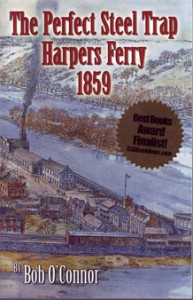 The Perfect Steel Trap Harpers Ferry 1859
The Perfect Steel Trap Harpers Ferry 1859
The Perfect Steel Trap Harpers Ferry 1859 is a historical novel surrounding the John Brown raid, trial and execution in Harpers Ferry and Charlestown, Virginia in 1859. The four hundred-page book is narrated by Owen Brown, one of John Brown’s sons, who escaped from Harpers Ferry and lived until 1889. He and another raider, Osborne Anderson, supposedly gathered the information for this book from participants in the events to get for themselves answers regarding what happened.
All characters in this book are real and were really at the scene. They provide about two dozen eyewitness accounts provided through their unedited reports. Photographs and drawings accompany the text. You will meet famous persons who were on the scene, like Brevet Colonel Robert E. Lee, Jeb Stuart, Governor Henry Wise, and Thomas Jackson (later to be known as “Stonewall”). And you will meet just ordinary citizens like Margarette Brown and Christine Fouke.
Along the way you will be taken on the harrowing escape of seven of the raiders, along the ridge of South Mountain to points north, as they were pursued by men and their dogs. The large bounty placed on their heads being the prize everyone was seeking. Two were eventually recaptured, but five escaped and were never found.
You will learn about the raid, the trial and the execution, from accounts of A. J. Phelps the conductor of the B & O Railroad, Judge Parker the trial judge, and David Hunter Strother, Harpers Weekly journalist and artist. And you will meet highly unlikely participants, like J. B. Wilkes, an actor: Samuel F. B. Morse, inventor; and Josiah Perham, railroad entrepreneur.
The Perfect Steel Trap Harpers Ferry 1859 is based on fact. Newspaper accounts, telegrams and court documents included in the book will tell you what really happened during these exciting times. Frederick Douglass, who told John Brown that Harpers Ferry was “the perfect steel trap”, provides the title of this book. Douglass told him, once Brown and his men got in, the trap would close and all would be lost.
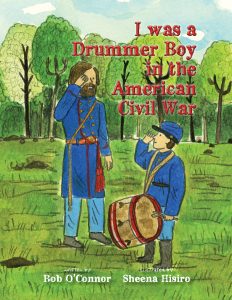 I was a Drummer Boy in the American Civil War
I was a Drummer Boy in the American Civil War
My new children’s book is about the nephew of my great uncle who marched with the 105th Illinois during the American Civil War. The book is expertly illustrated by Sheena Hisiro. The book details the importance of the regimental drummer boy and covers details of hisadventure.
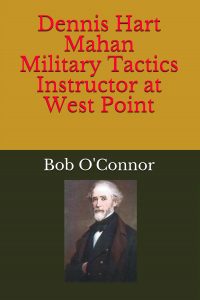 Dennis Hart Mahan Military Tactics Instructor at West Point
Dennis Hart Mahan Military Tactics Instructor at West Point
The story of the academy proessor who taught military tactics to over 900 West Point graduates who ofought in the Civil War, including over 450 generals from both sides.
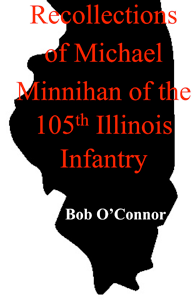 Recollections of Michael Minnihan of the 105th Illinois Infantry
Recollections of Michael Minnihan of the 105th Illinois Infantry
The story of the author’s great uncle, an Irish immigrant, who served for thirty-three months, including spending time in Sherman’s army and the capture of Atlanta and Savannah.
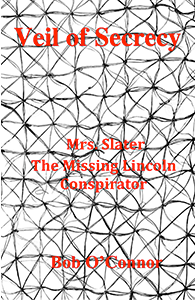 Veil of Secrecy
Veil of Secrecy
Novel about the mysterious Sarah Slater, Confederate courier and friend of John Surratt, Jr., who disappeared into thin air while other Lincoln Conspirators were standing trial in Washington.
 “The Greatest Gun of the Ages” Lorenzo Sibert’s Forty-eight Shot Repeating Rifle 1861
“The Greatest Gun of the Ages” Lorenzo Sibert’s Forty-eight Shot Repeating Rifle 1861
The story of a gun that was patented by a Virginian and perhaps could have shortened the American Civil War and maybe even changed the outcome…but it was never manufactured.
Buy Now
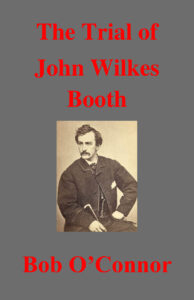 “The Trial of John Wilkes Booth”
“The Trial of John Wilkes Booth”
Of course John WIlkes Booth never went to trial. He was killed while trying to escape the authorities. But what if a trial were held today. What do you think the outcome would be? His attorney is Clarence Darrow known affectionately as the “attorney for the damned”. Among the witnesses are famous persons including Sam Clemens (aka Mark Twain), William Shakespeare, and Aristotle. The prosecuting attorney is best known as having written a poem that became the national Anthem — Francis Scott Key.
Buy Now
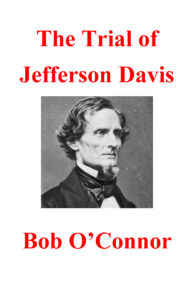 “The Trial of Jefferson Davis”.
“The Trial of Jefferson Davis”.
The second in the trial series of men who never went to trial. Davis was held in prison at Fortress Monroe for several years but never was offered a fair trial. This is what might have happened if a trial had been held.
Buy Now
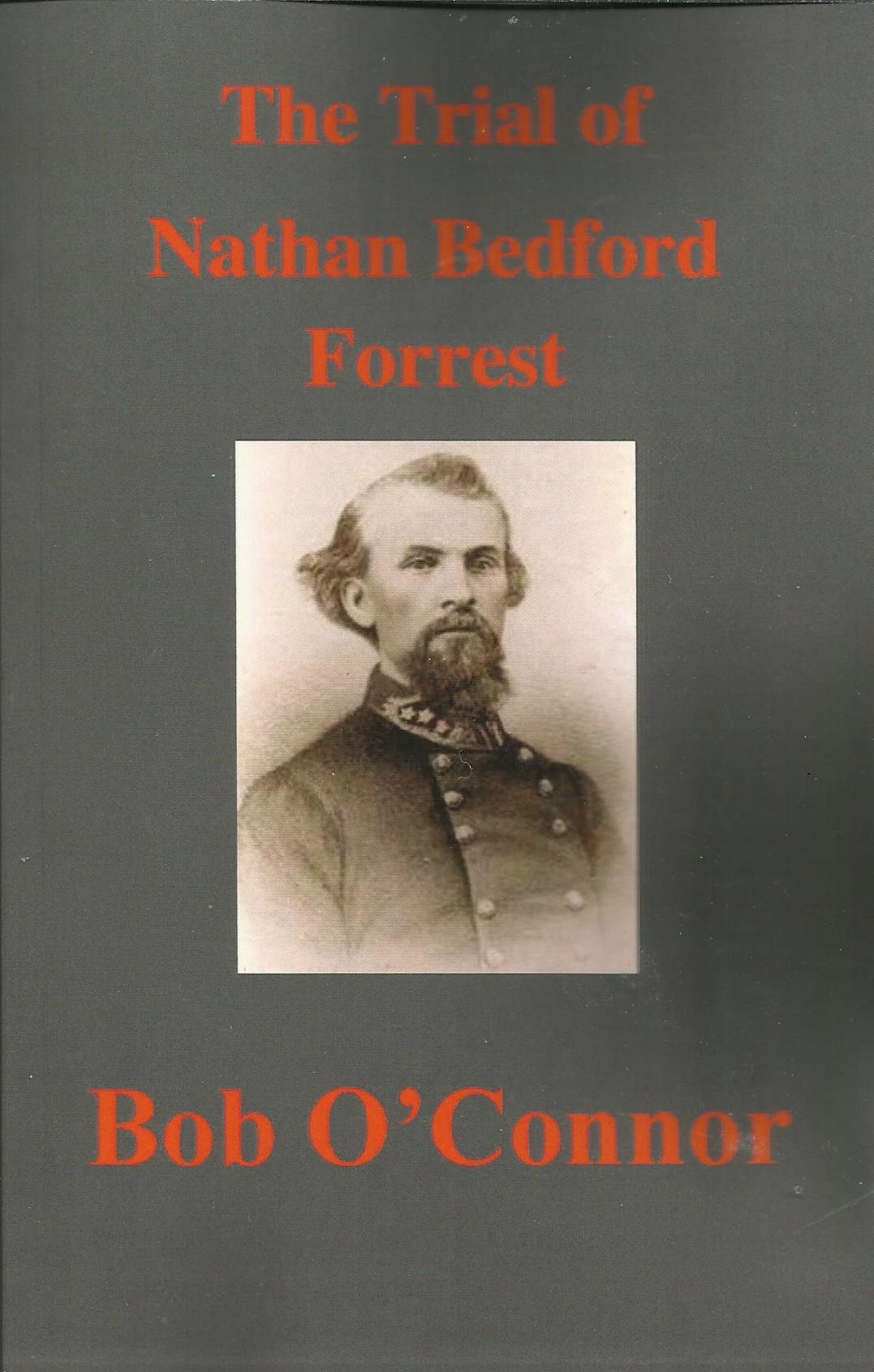 “The Trial of Nathan Bedford Forrest”.
“The Trial of Nathan Bedford Forrest”.
General Forrest never went to trial but probably should have for atrocities caused by his men at Fort Pillow, including but not limited to killing members of the Union army including men of the United States Colored Troops after they had surrendered, laid down their arms, and held their hands up high.
Buy Now
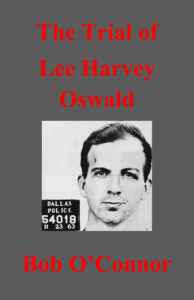 “The Trial of Lee Harvey Oswald”.
“The Trial of Lee Harvey Oswald”.
The fifth in my trial series of men who did not go to trial…but what if they did? Not Civil War related as my other books are, but certainly intriguing. There are surprises from nearly every witness in this trial.
Buy Now
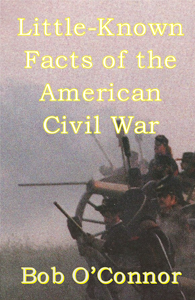 “Little Known Facts About the American Civil War”
“Little Known Facts About the American Civil War”
Stump your friends with trivia they probably do not know, like “What year did the last state finally approve the 13th Amendment to the Constitituion (making Slavery illegal)?” 2013. Or that “Stonewall” Jackson’s arm is buried in a separate grave far distance from the burial site of his body.
Buy Now
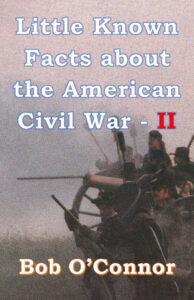 “Little Known Facts About the American Civil War” – Book II
“Little Known Facts About the American Civil War” – Book II
This book contains the resignation letter Gen. Robert E. Lee sent to Jefferson Davis following the Battle of Gettysburg, information about the Civil War general everyone thinks was the inventor of baseball (but who didn’t actually invent baseball), facts of a northern town that seceded from the Union, plus much more
Buy Now
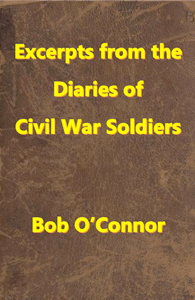 “Excerpts from the Diaries of Civil War Soldiers”
“Excerpts from the Diaries of Civil War Soldiers”
Read what eye-witnesses wrote in their diaries about the war. For instance, Major William Child, Surgeon at the Battle of Antietam wrote “Day before yesterday I dressed the wounds of sixty-four different men — some having two or three each.” Or M. A. Cooper, 4th Alabama, at the Wilderness, who wrote, “I received thirty-seven holes through my blanket which was around my shoulders, one through my hat, and five through my canteen.
Buy Now
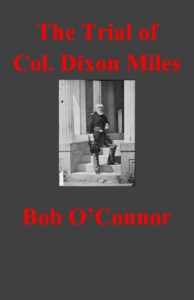 “The Trial of Col. Dixon S. Miles”
“The Trial of Col. Dixon S. Miles”
Fourth in my trial series of men who did not go to trial. Miles was the commanding officer of the Union troops at Bolivar Heights (Harpers Ferry) who surrendered over 12,400 to Confederate General “Stonewall” Jackson on September 15, 1862. Miles avoided being court martialed because he was mortally wounded and died the next day.
Buy Now
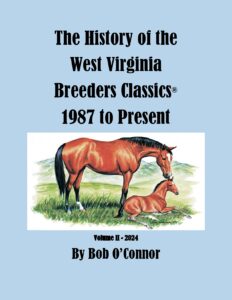 “The History of the West Virginia Breeders Classics — 1987 to Present” $44.95 plus $12 postage. 430 page full color large format book containing photographs of the horses, jockeys, and the races plus the results of each race covering the biggest annual racing night for WV bred race horses. *Updated from last year including the 2023 race results and a total of 25 more pages. A must read for the racing fan.*
“The History of the West Virginia Breeders Classics — 1987 to Present” $44.95 plus $12 postage. 430 page full color large format book containing photographs of the horses, jockeys, and the races plus the results of each race covering the biggest annual racing night for WV bred race horses. *Updated from last year including the 2023 race results and a total of 25 more pages. A must read for the racing fan.*
Buy Now
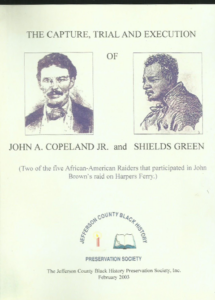 “The Capture, Trial, and Execution of John A. Copeland, Jr. and Shields Green”
“The Capture, Trial, and Execution of John A. Copeland, Jr. and Shields Green”
Two of John Brown’s African American Raiders. Reprint from out-of-print 2003 edition by the Jefferson County Black History Preservation Society with reprint facilitated by Bob O’Connor Books. $9.95 plus $3.00 shipping. All proceeds go to the Jefferson County Black History Preservation Society.
Buy Now
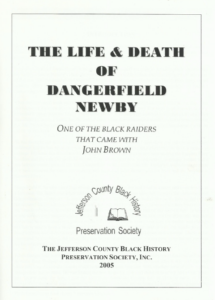 “The Life & Death of Dangerfield Newby” One of John Brown’s African American Raiders. Reprint from out-of-print 2005 edition by the Jefferson County Black History Preservation Society with reprint facilitated by Bob O’Connor Books. $9.95 plus $3.00 shipping. All proceeds go to the Jefferson County Black History Preservation Society.
“The Life & Death of Dangerfield Newby” One of John Brown’s African American Raiders. Reprint from out-of-print 2005 edition by the Jefferson County Black History Preservation Society with reprint facilitated by Bob O’Connor Books. $9.95 plus $3.00 shipping. All proceeds go to the Jefferson County Black History Preservation Society.
Buy Now
 “Little-Known Facts of the American Civil War — III” Learn about the use of camels by both armies, life and death in Civil War prisons, and a drummer boy who happened to be a girl.
“Little-Known Facts of the American Civil War — III” Learn about the use of camels by both armies, life and death in Civil War prisons, and a drummer boy who happened to be a girl.
Buy Now
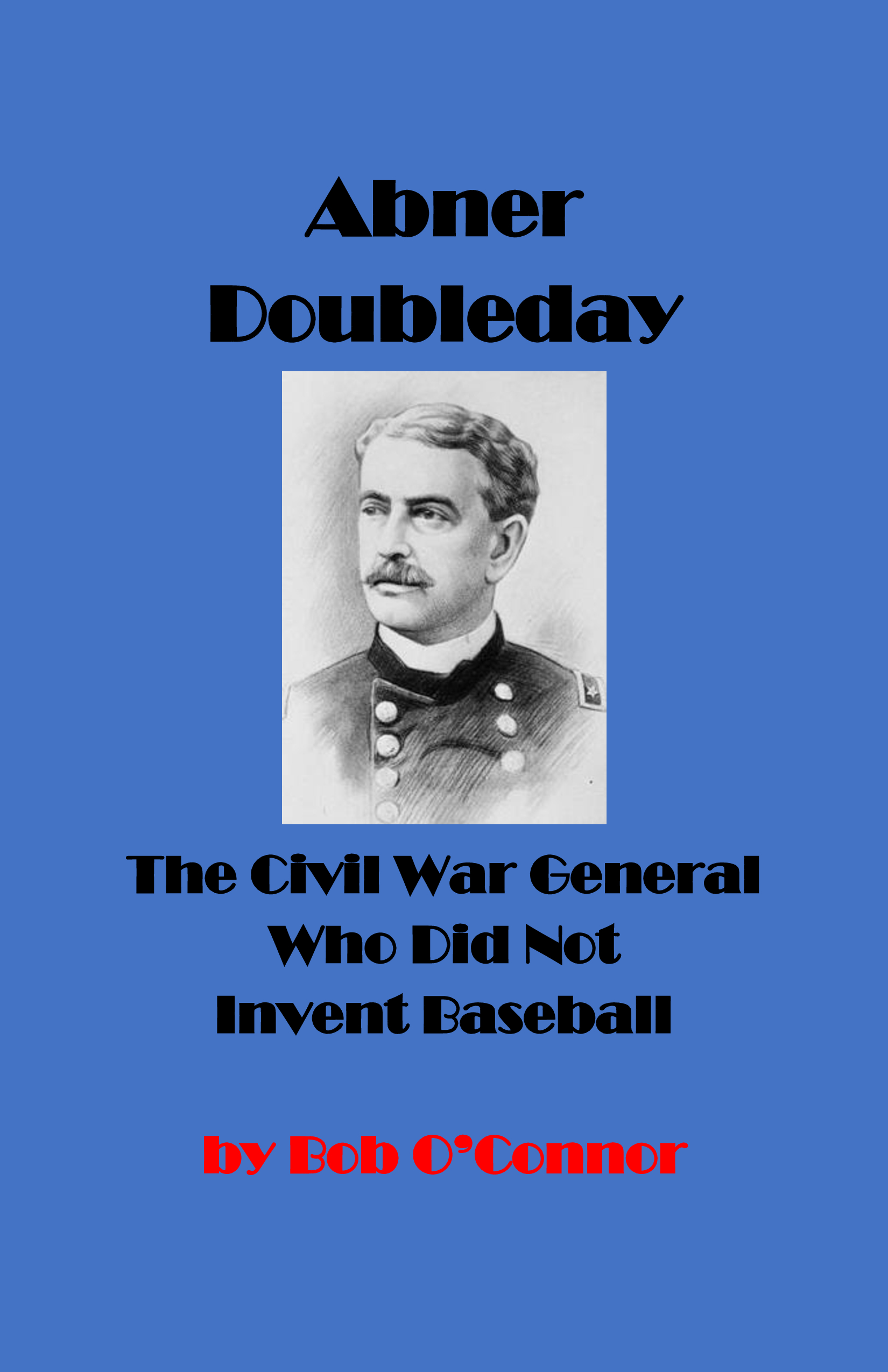 “Abner Doubleday The Civil War General Who Did Not Invent Baseball” Many learned growing up that Abner Doubleday invented baseball. The National Baseball Hall of Fame in Cooperstown, NY was opened on the 100th anniversary of his supposed invention of baseball. He did not invent baseball. In fact, he never claimed he did.
“Abner Doubleday The Civil War General Who Did Not Invent Baseball” Many learned growing up that Abner Doubleday invented baseball. The National Baseball Hall of Fame in Cooperstown, NY was opened on the 100th anniversary of his supposed invention of baseball. He did not invent baseball. In fact, he never claimed he did.
Buy Now
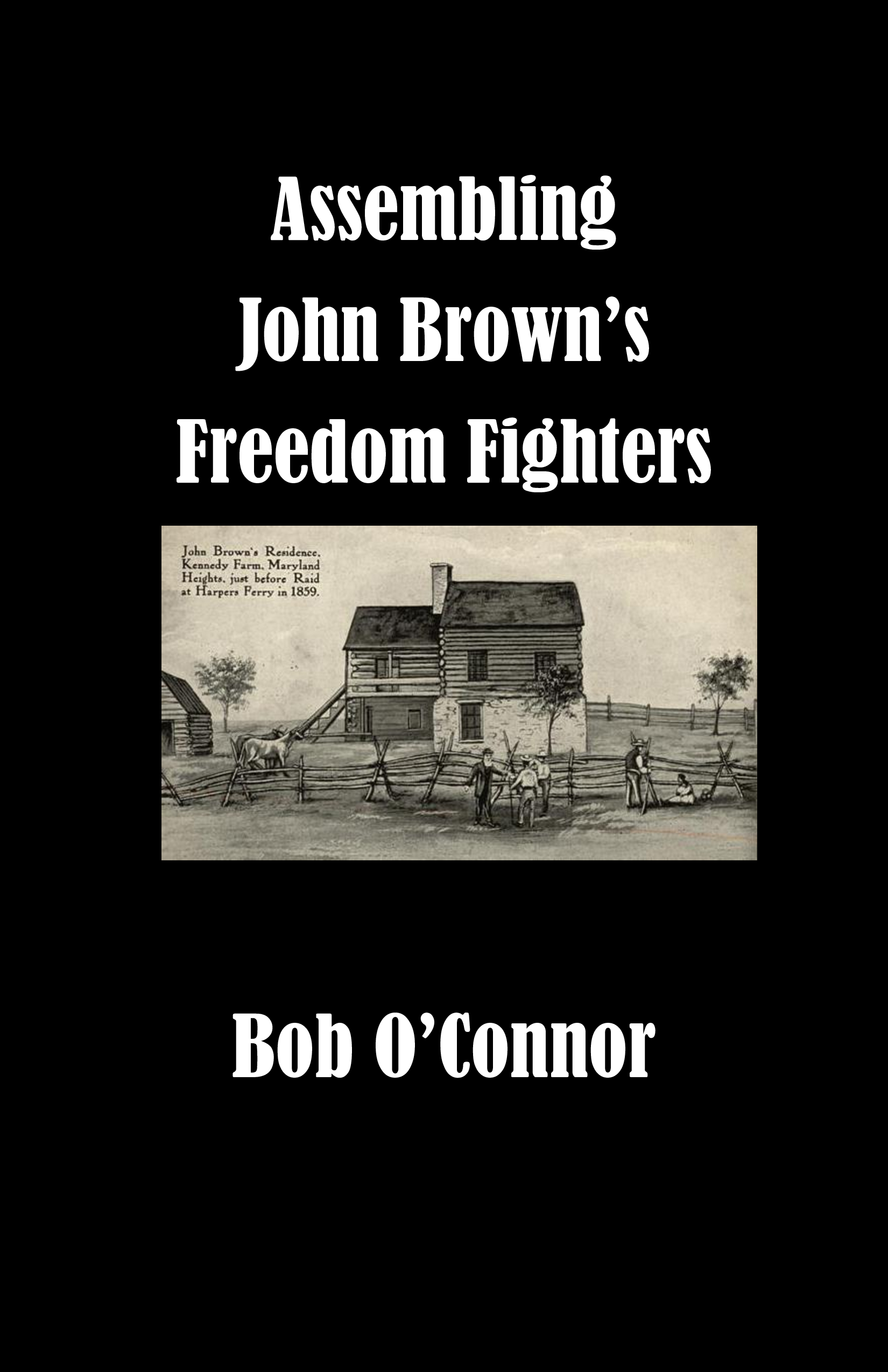 “Assembling John Brown’s Freedom Fighters” The prequel to my first book “The Perfect Steel Trap Harpers Ferry 1859” this is the bios of all the participants, how they became affiliate with John Brown, how they got to the Kennedy Farm, what their role was in the rid, and what happened to them.
“Assembling John Brown’s Freedom Fighters” The prequel to my first book “The Perfect Steel Trap Harpers Ferry 1859” this is the bios of all the participants, how they became affiliate with John Brown, how they got to the Kennedy Farm, what their role was in the rid, and what happened to them.
Buy Now
 “The aMAZEYing Baseball Career of Randy Maze” The career stats of West Virginia Baseball Coach Randy Mazey documenting his 521 career wins.
“The aMAZEYing Baseball Career of Randy Maze” The career stats of West Virginia Baseball Coach Randy Mazey documenting his 521 career wins.
ALL PROCEEDS GO TO WVU BASEBALL TEAM
Buy Now
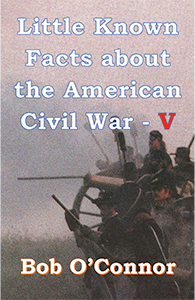 “Little Known Facts About the American Civil War — V” Continuation of facts, different from the other books. Includes a Confederate soldier who was wounded eleven times but survived the war, the story of the Pickle Boy, and Ellen Marcy who dated two different Civil War generals.
“Little Known Facts About the American Civil War — V” Continuation of facts, different from the other books. Includes a Confederate soldier who was wounded eleven times but survived the war, the story of the Pickle Boy, and Ellen Marcy who dated two different Civil War generals.
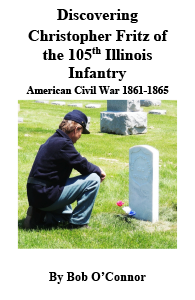 “Discovering Christopher Fritz of the 105th Illinois Infantry” Follow the trials of a member of the Pioneer Corps as he marched with Sherman’s Union Army during the Civil War
“Discovering Christopher Fritz of the 105th Illinois Infantry” Follow the trials of a member of the Pioneer Corps as he marched with Sherman’s Union Army during the Civil War
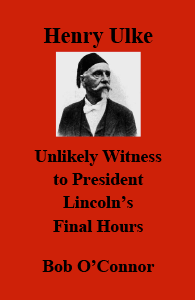 “Henry Ulke Unlikely Witness to President Lincoln’s Final Hours “ The tale of an immigrant from Transylvania, Prussia who was present at the Petersen House when Lincoln died
“Henry Ulke Unlikely Witness to President Lincoln’s Final Hours “ The tale of an immigrant from Transylvania, Prussia who was present at the Petersen House when Lincoln died
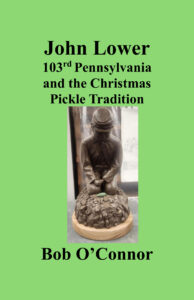 “John Lower 103rd Pennsylvania and the Christmas Pickle Tradition “
“John Lower 103rd Pennsylvania and the Christmas Pickle Tradition “
Book is a novel based on the true story of John Lower’s incarceration in Andersonville Prison and the development of the tradition of hiding a pickle in the Christmas tree on Christmas Eve. The person who finds the pickle receives a special present and good luck for the next year.